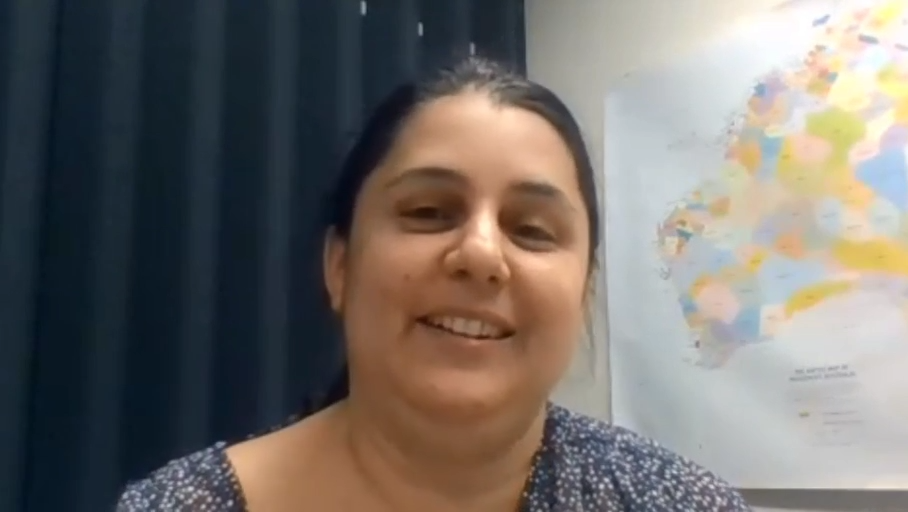
Age at interview: 36
Contributing factors to fertility problems: Polycystic ovary syndrome (PCOS), one ovary, low Anti Mullerian Hormone (AMH), needed donor sperm (not in a relationship)
Age at diagnosis: 31
Fertility treatments: IUI with clomifene citrate [CLOMID], IVF
Background: Sarah works full-time as a teacher. A solo mum by choice, she lives with her two pre-school aged children in a regional town. Sarah has Australian and Italian heritage..
About Sarah: Sarah had always wanted to have children, however, growing up she had difficulties with heavy and painful menstrual periods. When she was 31, Sarah began experiencing considerable pain on one side of her ovaries, caused by a cyst. Her ovary was removed at the same time as she had the cyst removed, and Sarah was also diagnosed with polycystic ovary syndrome (PCOS)i
Sarah was starting to think about having a child, so she underwent fertility testing which revealed that her AMH (Anti Mullerian Hormone) levels were low, indicating she had a low reserve of eggs. As she was single and had sufficient savings and family support, particularly from her mother, Sarah began to investigate having a child on her own through ART (Assisted Re productive Technology).
After weighing up her options and advice from her fertility specialist, Sarah decided to start with Intra-Uterine Insemination (IUI) as it was less invasive and more affordable. Expecting IUI would be unsuccessful, she was ‘very, very surprised’ to become pregnant on her second IUI attempt. Sarah’s pregnancy went smoothly, and she gave birth to a baby girl.
When her daughter was 18 months old, Sarah decided to try to have a second child, wanting her daughter to be able to share the experience of being donor conceived and raised by a single mother with a sibling. However, her next IUI cycle resulted in a miscarriage at seven weeks.
Sarah’s clinic then advised her that if she wanted to try again using the same donor she would need to undergo IVF because the remaining vials of sperm were not suitable for IUI. Alternatively, she could undergo IUI again but would need to choose another donor. Sarah felt strongly that she wanted her children to share the same donor and be ‘full siblings’, so decided to proceed with IVF.
Sarah described IVF as ‘a lot more complicated’ than IUI. Physically, she struggled with injecting herself with hormones and found egg collections ‘a bit painful’, but also recounted the emotional toll of waiting to find out about the number of eggs and embryos created from each cycle.
On Sarah’s first cycle, only three eggs were collected and one embryo created, which did not mature enough to be transferred. On her second cycle, her doctor increased her hormone stimulation and she produced 10 eggs. Although only one embryo could be transferred, fortunately it was successful, and Sarah became pregnant with her second daughter.
After each pregnancy, Sarah had trouble breastfeeding, which contributed to her periods returning quickly. They also started to become heavy and irregular again. Sarah reflected that she has never discussed the long-term impacts of PCOS with a doctor, because she was focused on doing whatever was needed to have children. However, she thinks she ‘probably’ needs to get some medical advice about her menstrual symptoms.
As Sarah had no embryos left after her second pregnancy, if she wanted to have another child she would need to begin IVF again, however she is happy with and feels lucky to have her daughters.
Find out more about Sarah's experiences in the following short films:
Experiences of Fertility Treatment
Donor Conception and Surrogacy
Solo Parenthood by Choice
Infertility and Fertility Treatment: Seeking Information and Support
Experiences of Conception, Pregnancy and Childbirth
Thoughts and Feelings about Infertility and Fertility Treatment
Advice for others Experiencing Infertility and/or Fertility Treatment
i PCOS and ovarian cysts are different. For further information on PCOS, see here, and on ovarian cysts see here.
